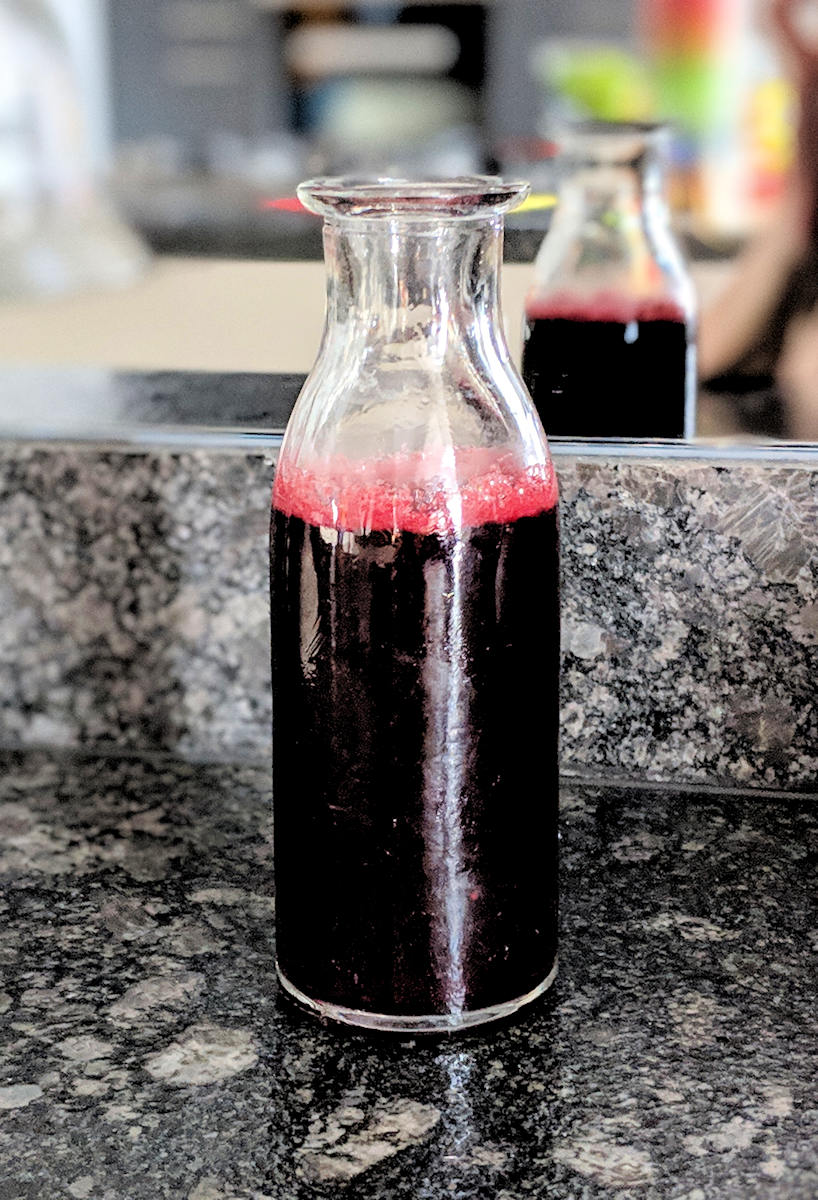Homemade pomegranate molasses, thick syrupy elixir you cannot be without when cooking Middle Eastern meats, sauces, dressings and desserts.

Syrup or molasses?
What we call various dishes and foodstuffs is just a matter of fashion.
Before Yotam Ottolenghi came to reign the culinary world of aubergine and pomegranate, we’d call this concoction syrup.
But now it sounds completely wrong, like what the great granny would make from garden redcurrants, in quaint bottles covered with squares of muslin secured with a ribbon tied around the bottle’s neck. Or Hercule Poirot’s tipple of choice. Or a cough medicine. Or maple.
But I have to disappoint Yotam’s fans (though I have nothing against the chef, au contraire: I adore the guy): molasses is the by-product of cane sugar and has nothing to do with fruit.
Pomegranate treacle
Molasses is actually exactly the same thing as treacle which is the British expression (Elsie, Lacie, and Tillie lived in the treacle well, not molasses) but ‘treacle’ doesn’t sound quite as sexy, does it?
Molasses then it will have to be since, if truth be told, it is technically not a syrup as that means a concentrated sugar solution in water. Mine features very little added sugar, though obviously naturally occurring sugars in fruit are very potent.
What it – technically, scientifically and semantically – should be called is pomegranate concentrate, reduction, cordial or squash. But would anyone know what I was talking about if I started saying ‘pomegranate cordial’ all the time? Would they now.
It is gorgeous stuff though and it works a treat as a meat glaze, acidity provider in dressings and sauces, a drizzle on cereal and a zing dribbled over ice cream. Even if calling it molasses is a thorough misnomer.
How to juice pomegranates?
Making the syrup (molasses) is a doddle: it’s the getting out of those pesky seeds (arils) from the pomegranates that is a challenge.
Or rather it used to be: now everyone on YouTube shows you how to bang the fruit halves with a wooden mallet to collect them in a large bowl. The downside is that a lot of the juice will end up on the kitchen worktops, but that is the nature of the crimson beast.
I sometimes juice poms like oranges, using a basic, manual citrus juicer. It works pretty well. But if you’d like to bang the fruit (ahem) with a spoon, it’s an effective method to let out steam, if not so much the arils.
How to make the pomegranate molasses?
If you end up with a bowlful of seeds (arils), you can either pass them through a blender then a sieve which is quite laborious.
A food mill is a handy tool – it also works extremely well for pureeing raspberries when you want to remove the pips. But if necessary equipment is scarce, resort to the citrus juicer.
Either way, once you’ve collected at least half a litre strained, beautiful juice, the rest is easy: just cook it down with not a lot of sugar and a little lemon juice, to retain the vibrant crimson hue. It’s ready to decant when thick and - you guessed – syrupy.
It best be kept in a fridge and it will be good for a few weeks there, in a clean bottle or container.
How to use pomegranate molasses?
It is gorgeous stuff, not only to be used in Middle Eastern dressings and sauces.
I love it on porridge, in tiny puddles like molten jewels. Try it on American style breakfast pancakes or on the proper, grown up, European crepes instead of Grand Marnier.
It will look and taste fantastic drizzled over whipped cream or yoghurt for a very simple dessert.
And you can dilute it with iced water, with or without a shot of vodka in the glass.
And for a twisty, fusion cream tea experience, drizzle it over clotted cream on a scone.
More fruit preserve recipes
Thick and flavoursome cranberry butter is like cranberry sauce on steroids and it can be used as jam, jelly or confiture too. There's no dairy in fruit butters!
Homemade redcurrant jelly is awesome with roast lamb, turkey pie and venison steaks. And this is a super speedy recipe which still makes crystal clear jelly.
Quick and simple glace cherries recipe: make your own candied fruit. They will last for a couple of weeks in a jar. Joking, of course – they’ll never last that long…
More pomegranate recipes
Microwaved pomegranate curd made from fresh fruit juice extracted from pomegranate seeds: arils. Both juicing the pomegranate and cooking the curd is easier than you think.
Twice roasted beets with figs, pomegranate and goats cheese. Recipe for twice cooked beetroots baked with figs and pomegranate seeds, served with soft goats cheese, the ultimate red food dish recipe.
Pomegranate jelly recipe, jelly made from pomegranate seeds is extremely flavoursome. Pomegranate jelly is great with panna cotta or with Greek yoghurt. My personal favourite: pomegranate jelly and cream cheese on a rice cake.